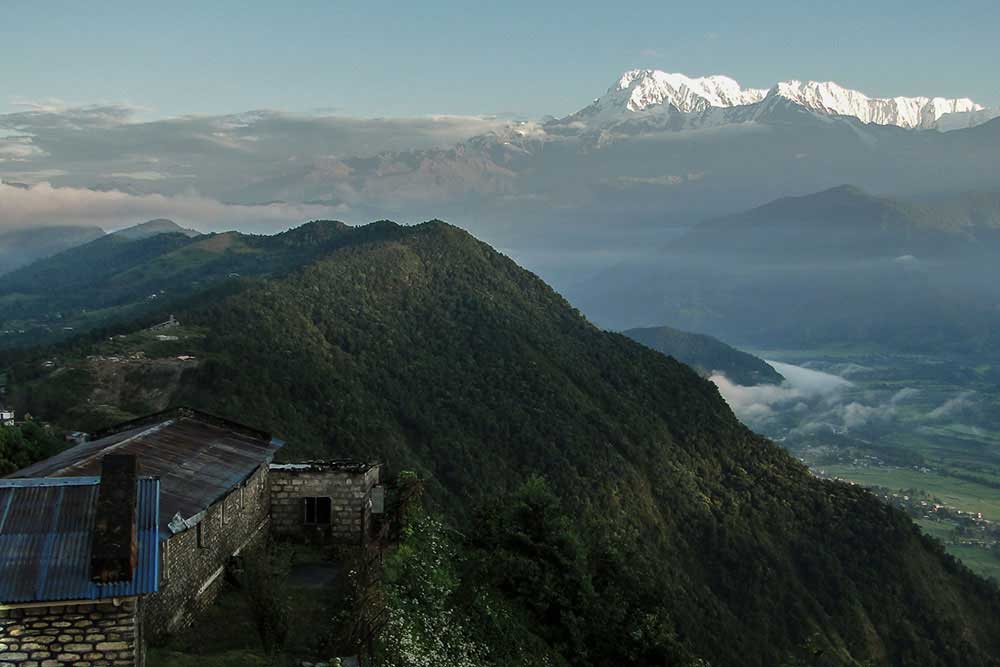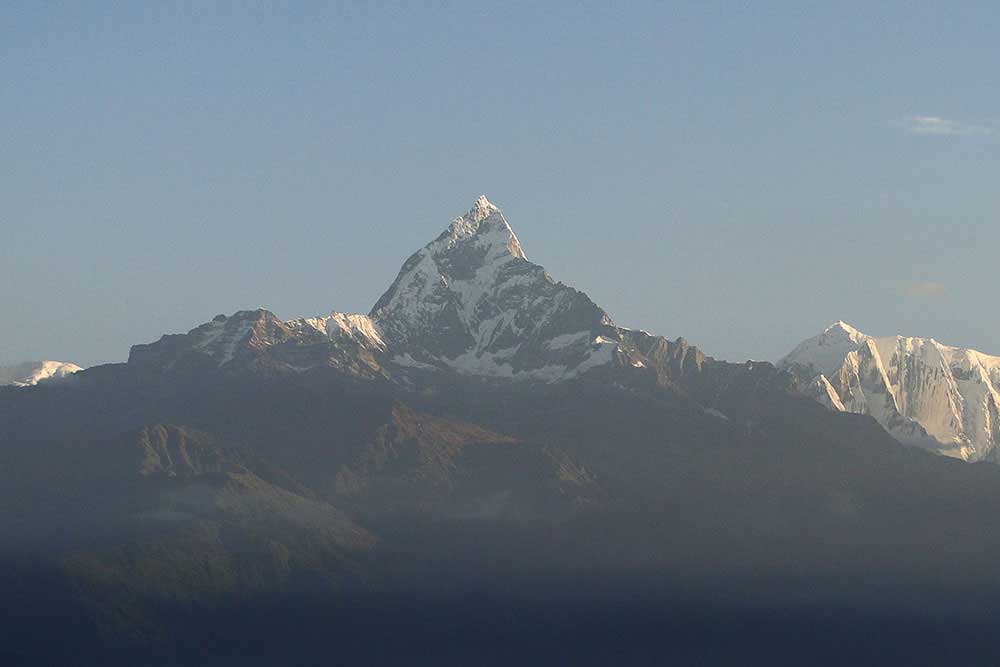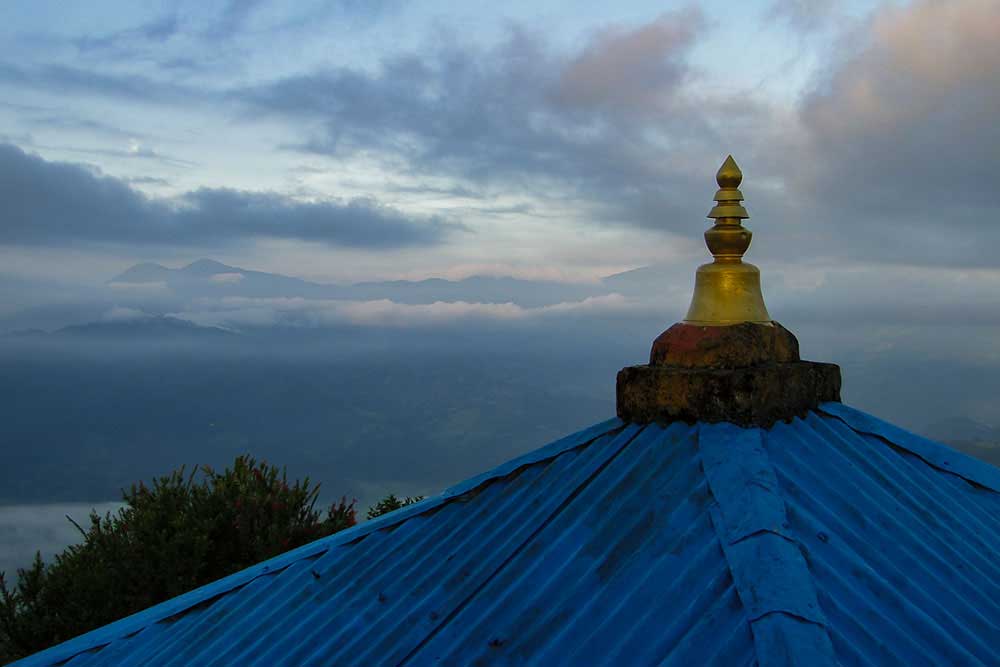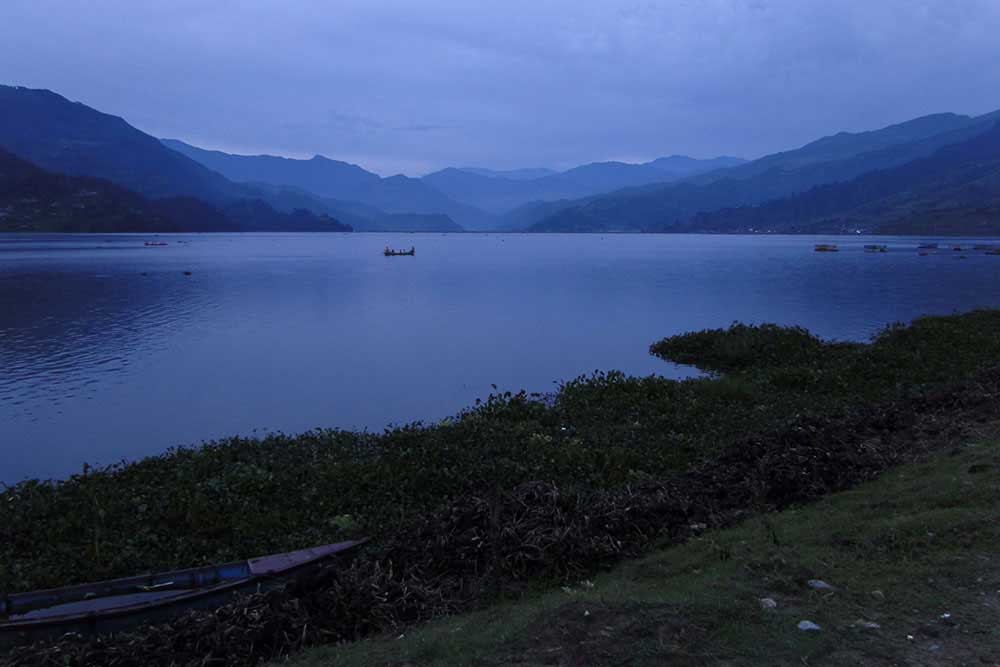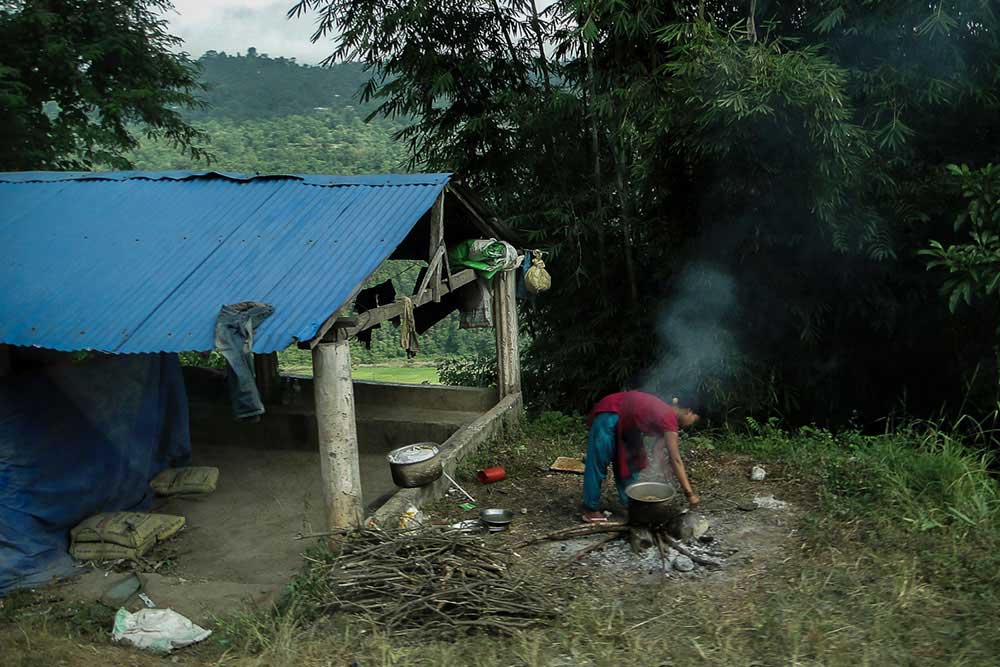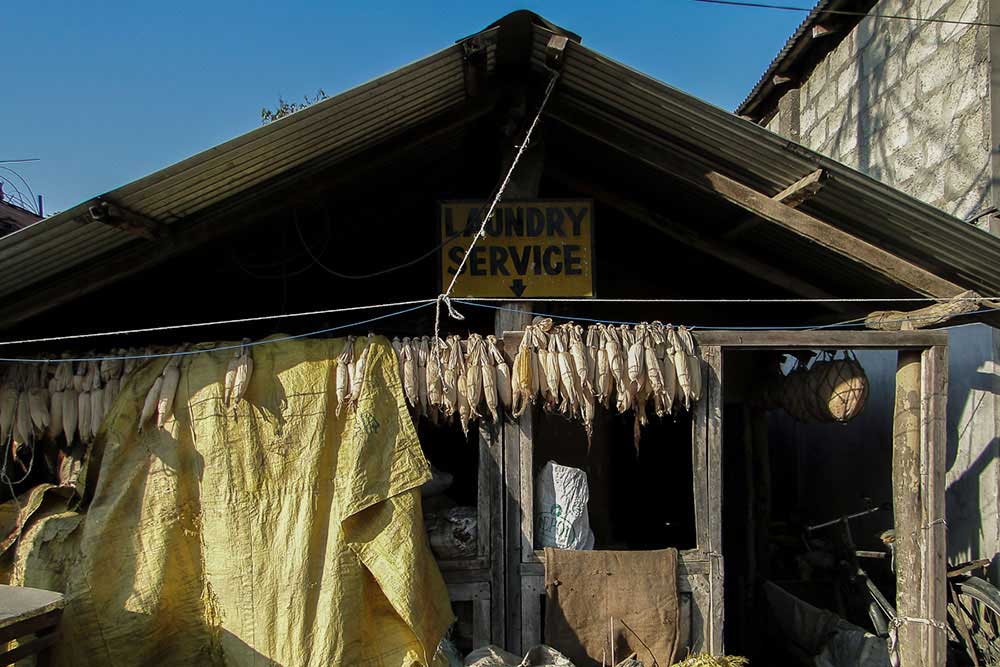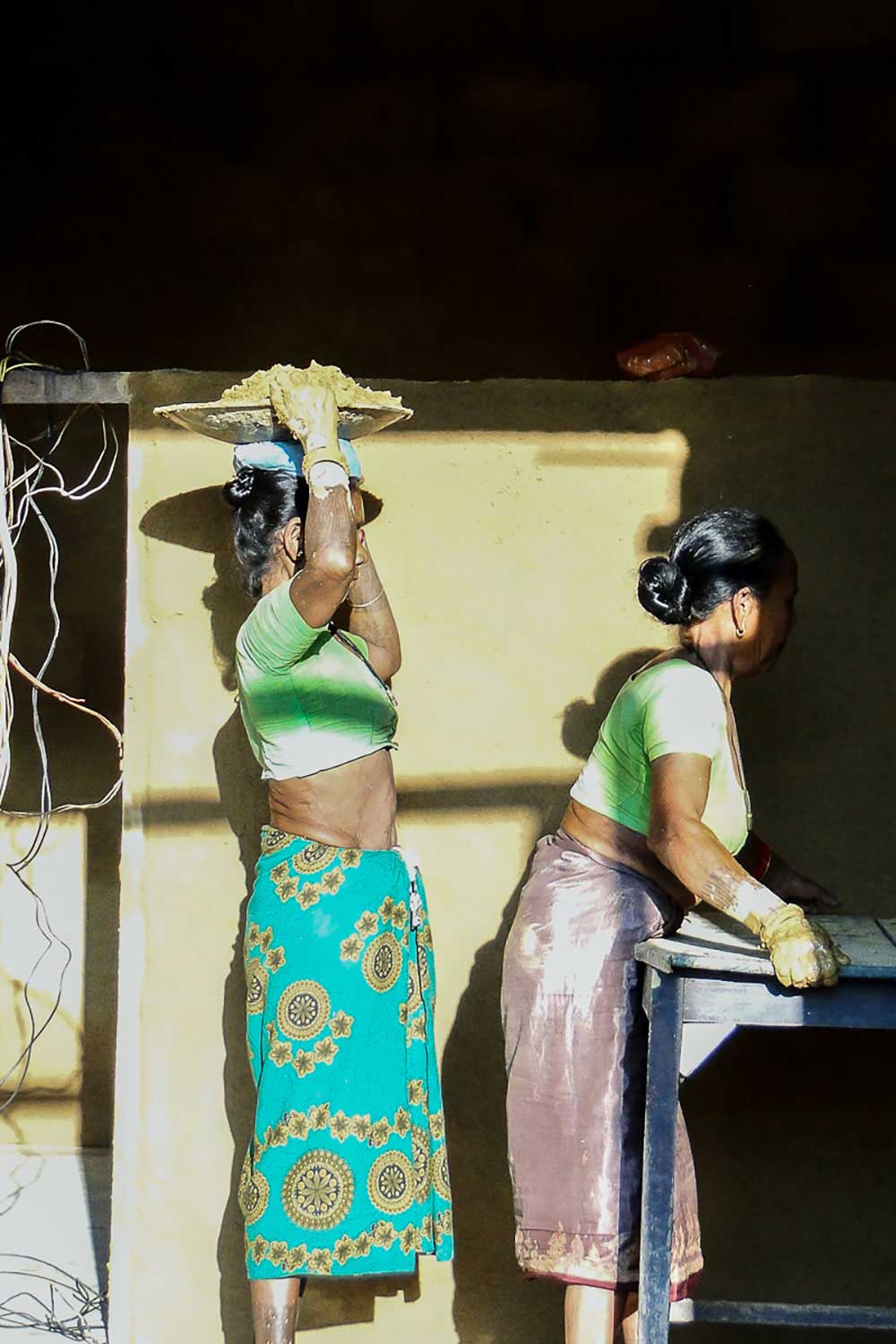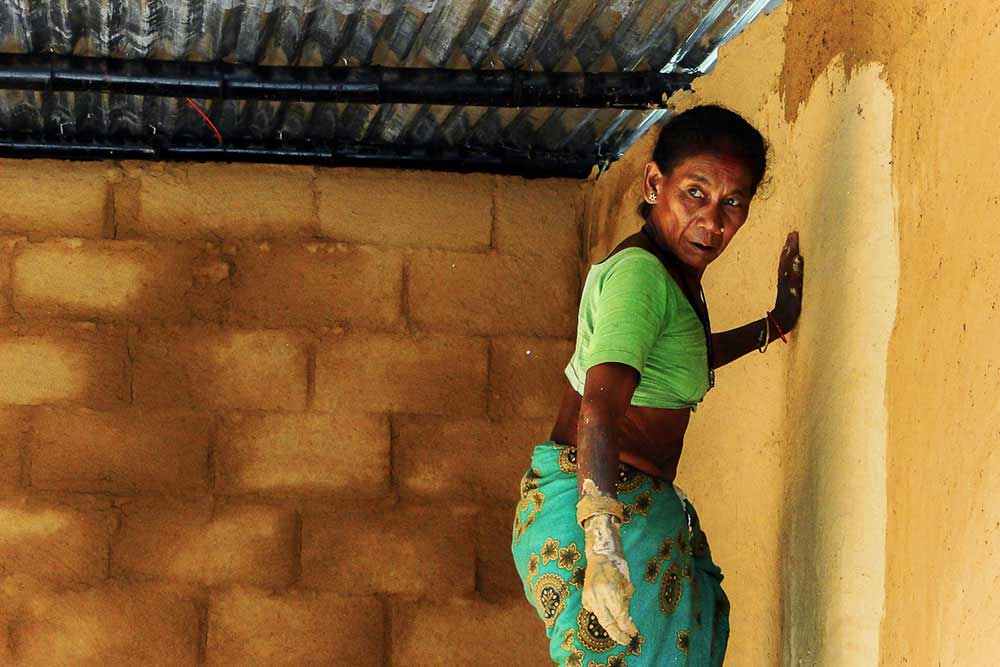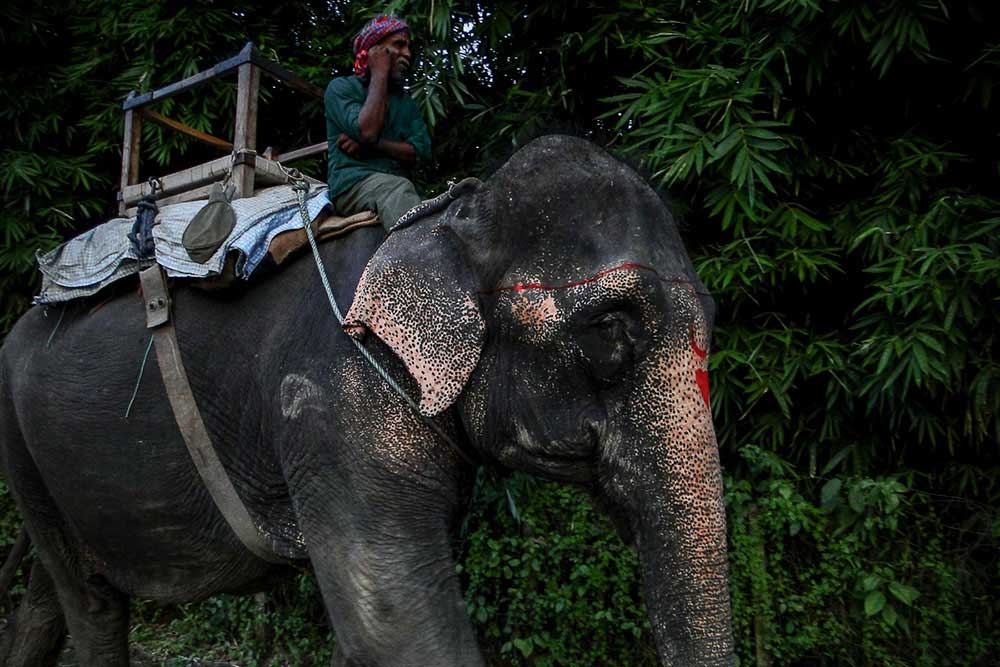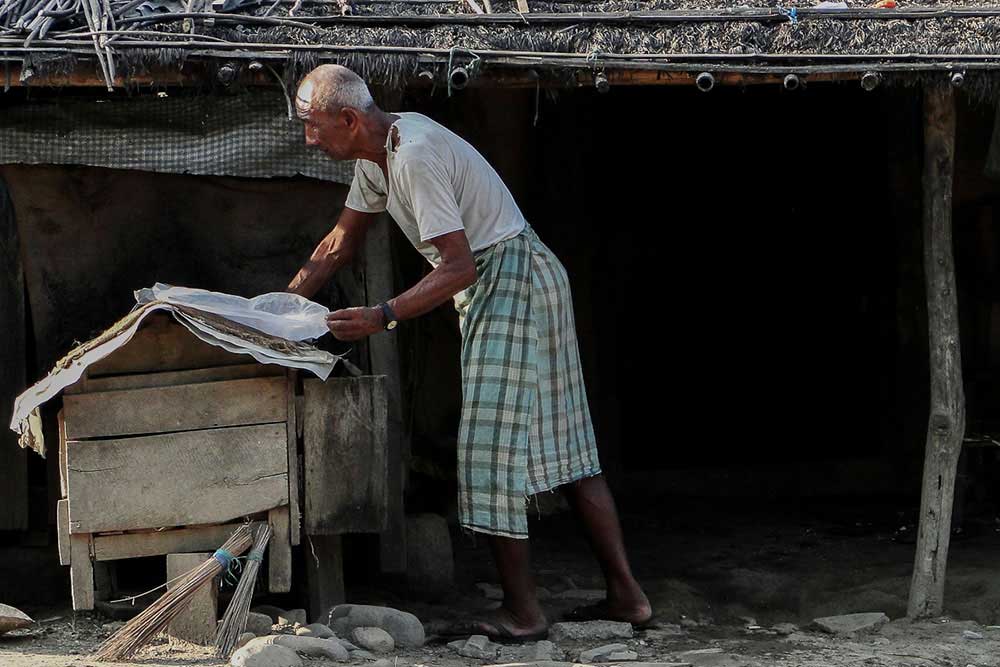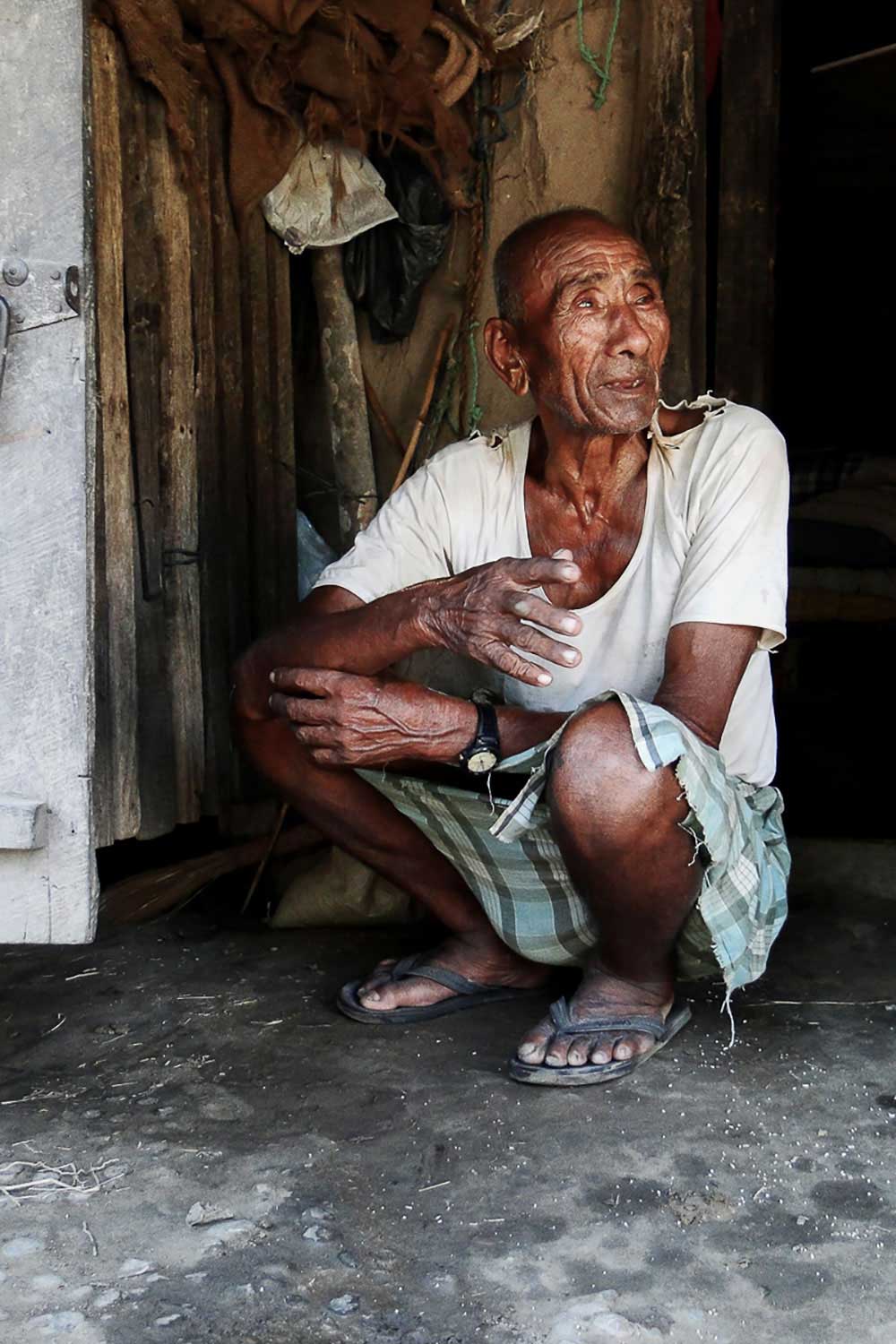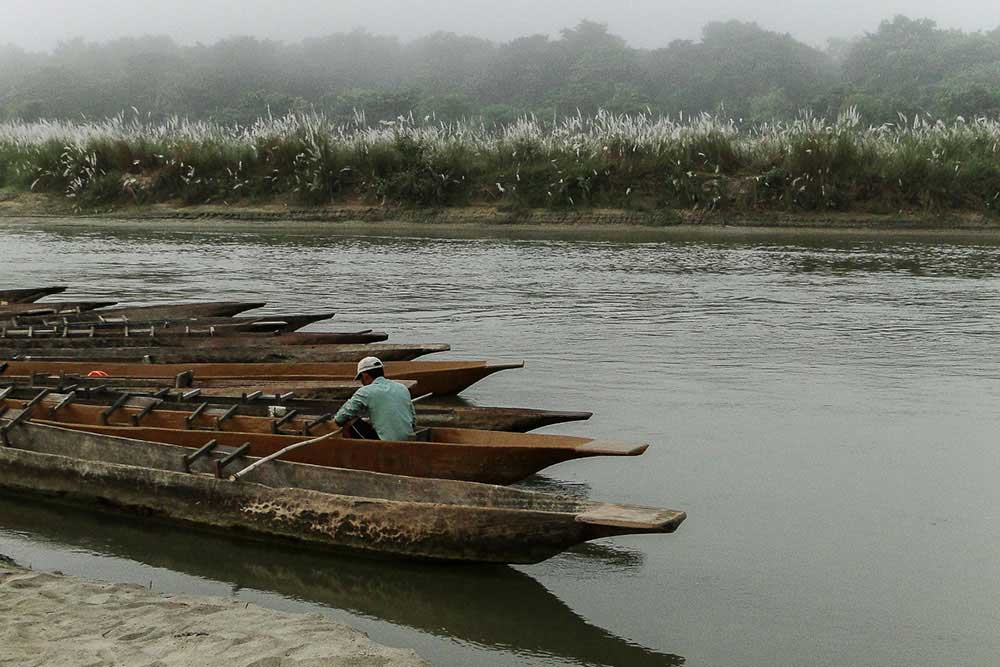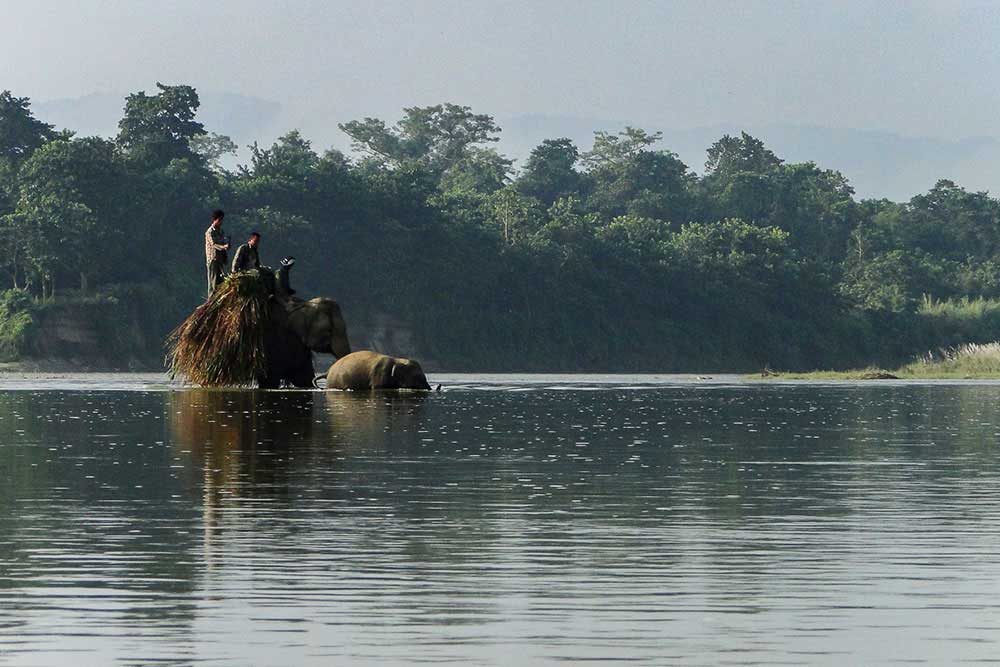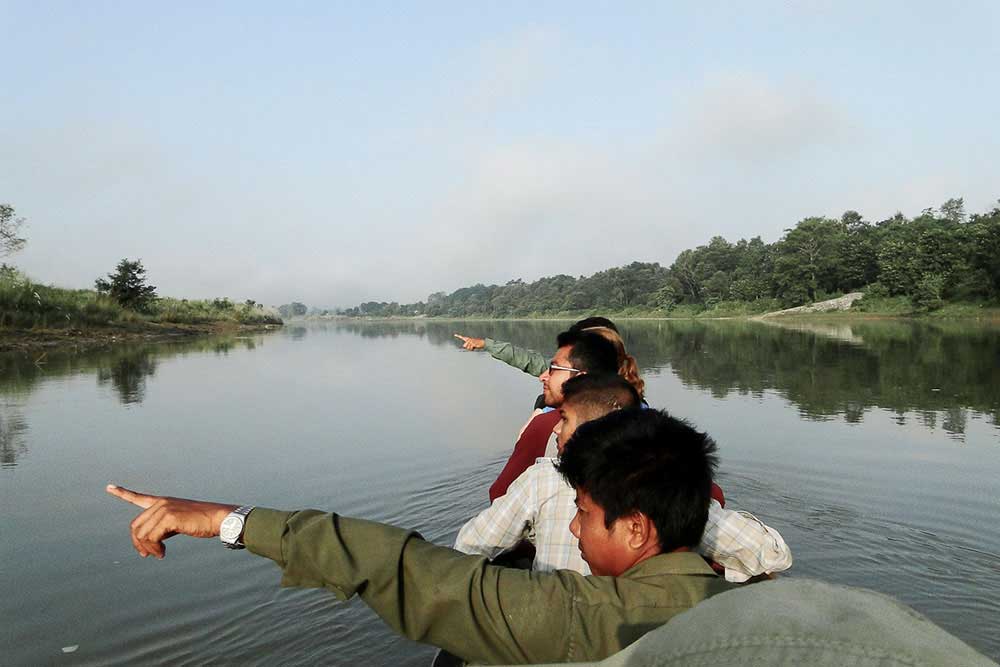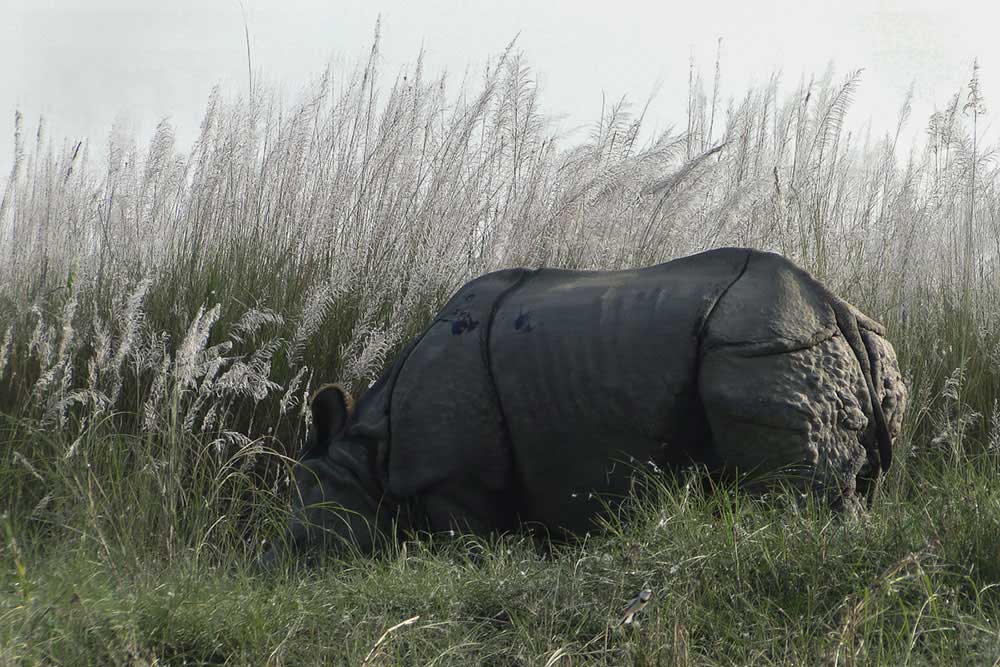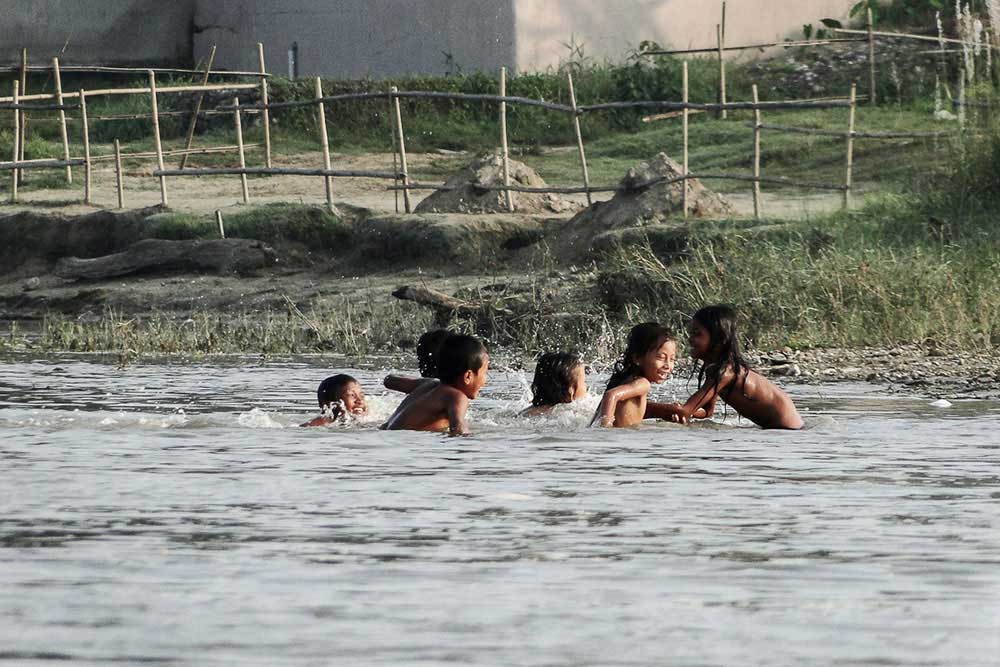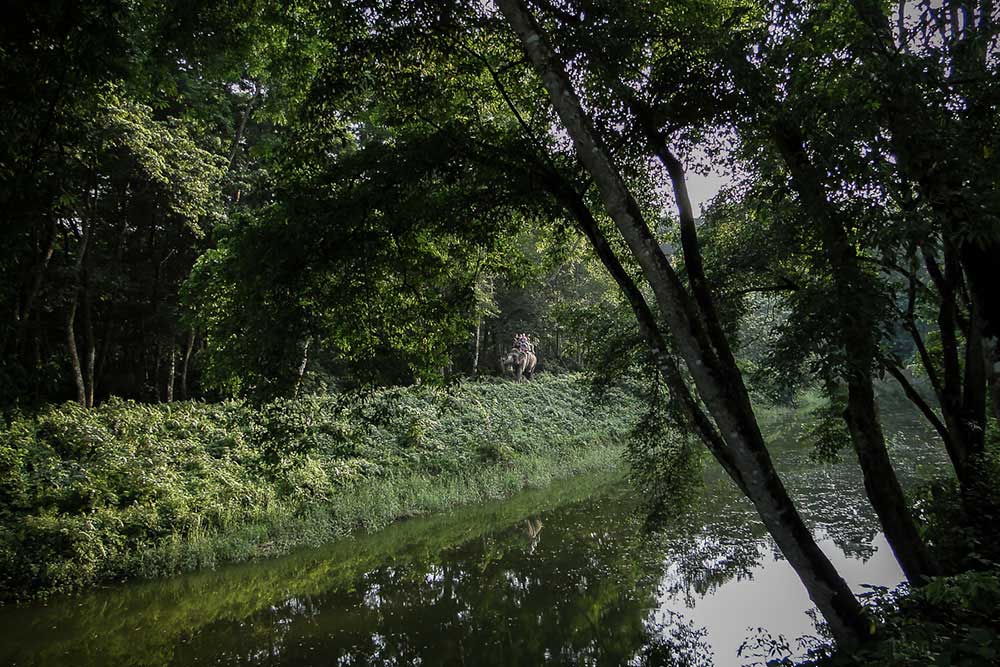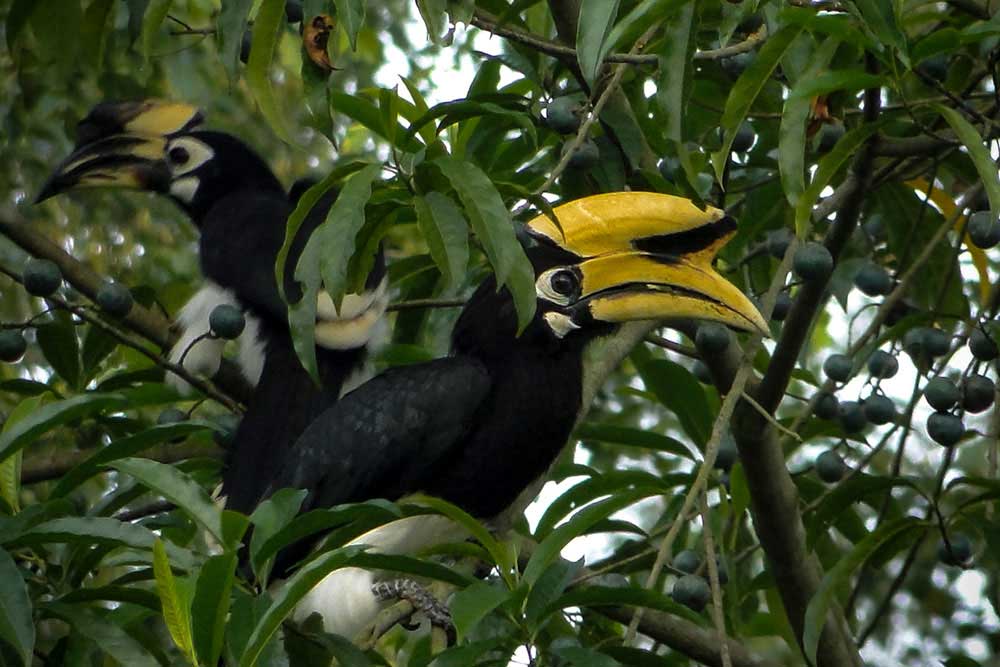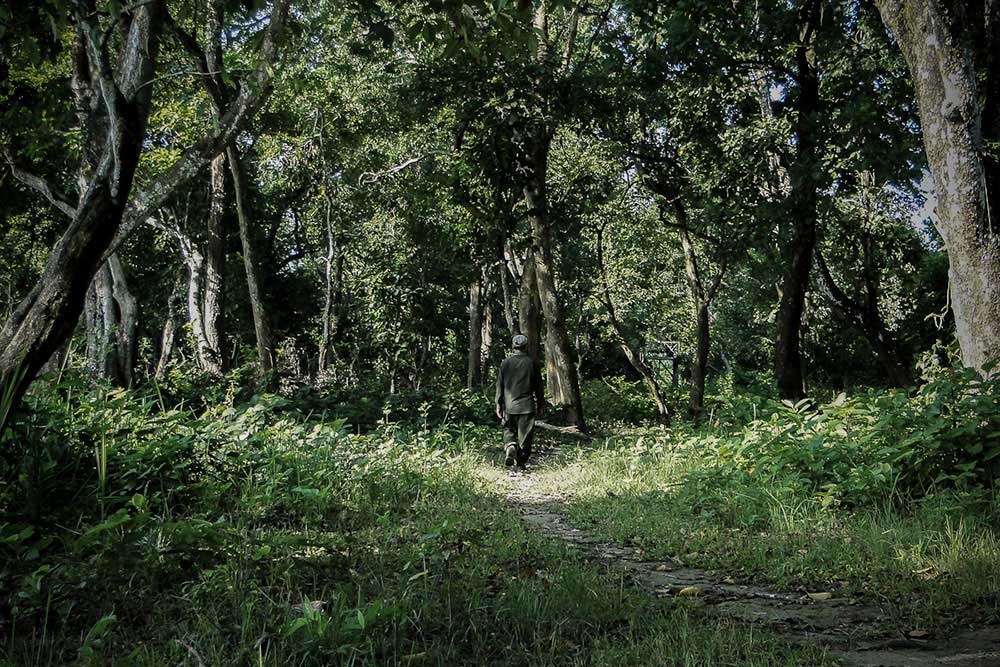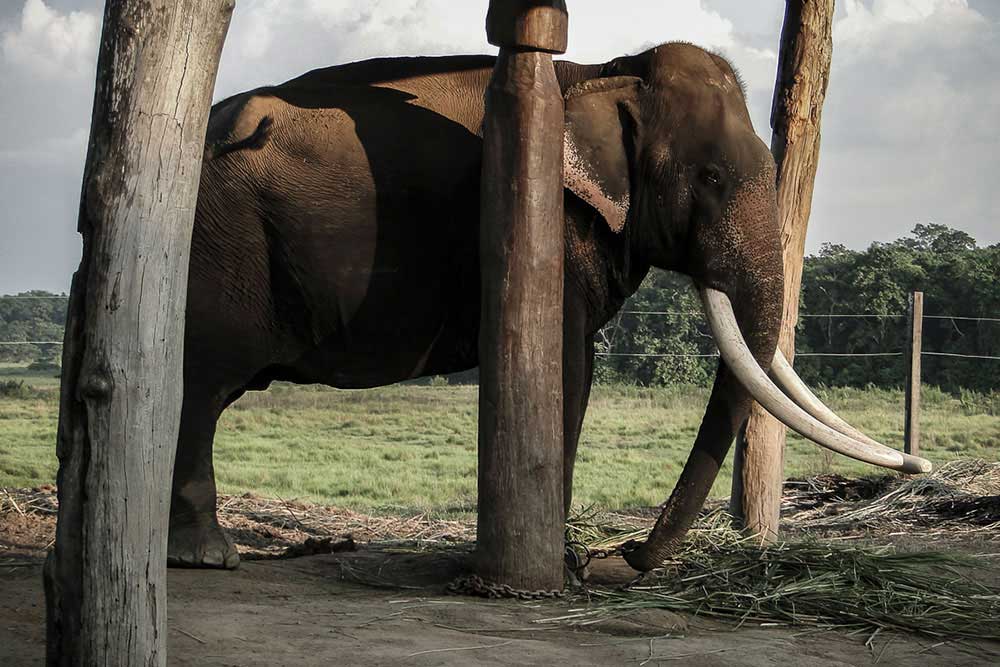From the frigid thin-air mountains to the sultry moist valleys of Nepal, human life is deeply bonded to nature. It is where they find resources for their survival and opportunities to generate income.
Down the Rapti River, in the Lower Tarai Valley, the wooden dugout canoe made from the trunk of a single tree gently weave its way into the northern border of the Chitwan National Park in search of wildlife. Established in the country in 1973, the formerly called Royal Chitwan National Park, is Nepal’s first national park and home of several endangered species such as the One Horned Rhinoceros, Royal Bengal Tiger, Pangolin, Gangetic Dolphin and the Gharial Crocodile.
This valley is nothing like the famous mountains of Nepal. In the foothills of the Himalayas, these hot and humid forests, savannahs and marshy grasslands are also home for the Tharu people. In this UNESCO World Heritage Site, only the river separates the village settlements from the protected areas and its wildlife. The villagers stay close to the river for water supply, bathing and laundry, in addition to the resources found across the river, as raw materials to build their homes and food for their animals, which are often transported by elephants.
As we paddled down the river soon we noticed a discreet silhouette lurking above the surface, with its long and thin razor-sharp jaw and bulky snout, the Gharial Crocodile (Gavialis gangeticus) remains still against the current, hoping to capture its prey with minimal effort and energy expenditure. The Nepalese guide who leads us calls them the “Fish-eating Crocodile”, as opposed to the “People-eating Crocodile” or Mugger Crocodile (Crocodylus palustris) with its robust body and broad snout resting on the left bank of the river. The information about their eating habits was followed by laughter on his part and retracting arms into the safety of the canoe on ours.
Critically endangered, the also called Gavial, founds in this river one of its last refuges and due to conservation and management programs carried out in the region, the species has presented some reasonable recovery.
A little further down the river, under the soft light of dawn on the oozy riverbank we see in awe the Greater One-horned Rhinoceros (Rhinoceros unicornis) just a few feet away. The sun touching its body among the vegetation, the rough skin that seems to wear armor and reminds us of the prehistoric beings that inhabit our imagination, the delicate hair that surrounds its ears.
With smooth and calm movements, this powerful and yet vulnerable animal fed before our eyes that admired in amazement.
With the population on the edge of extinction due to poaching at the end of the 1960s, the Chitwan National Park was established in order to protect the species and prevent its disappearance. Efforts since then dedicated by the government of Nepal and the World Wildlife Fund (WWF) have had a positive effect and today the park is known for its successful anti-poaching patrols that led to the increase of the species population.
Mesmerized by this encounter, we continued paddling gently down the river and spotting other species, such as the incredible Lesser-adjutant Stork (Leptoptilos javanicus) with its long and bare yellow neck that stood out in the sunlight as it walked along the banks in search of food, like fish, frogs or large invertebrates.
After a few hours we stopped on one of the banks ready to enter the forest. But before we started the trail, our guide spoke in Nepalese with a boy of about 12 years old who had accompanied us during the journey. After carefully listening the boy headed alone to the forest, disappearing amidst the tall vegetation. When questioned, the guide informed us that it was too risky to find a rhinoceros or a tiger in this vegetation and so the boy would check if it was safe – if he didn’t return in a few minutes, we would know something was wrong and return to the canoe. Asked again, this time about what would happen to the boy if he didn’t return, the guide just smiled.
Fortunately the boy returned announcing that there was no animal on that path, and then disappeared into the vegetation again. We then started our trail following our guide and quickly entered the forest. The change in temperature and humidity was immediate and abrupt, and soon our clothes were soaked with sweat. The guide walked quickly and every glimpse of wildlife he chased them away, stopping only briefly to observe the landscape and following the path again at fast paces and emitting sounds to alert the fauna like Spotted Deers (Axis axis) and even birds, like the beautiful Oriental Pied Hornbill (Anthracoceros albirostris). As biologists and researchers, we were there to observe and learn about the wildlife and we were soon annoyed by his behavior, after all, he was there to lead us to that goal. He knows the forest inside out and without breaking stride he said that there was where rhinos and tigers feed, and we wouldn’t want to run into one of them unless we were on the back of an elephant.
Elephants are part of everyday life in Chitwan, fulfilling an important chain of life for the Tharu people. Highly respected and considered sacred animals, elephants help protect forest and wildlife, obtain and transport natural resources, provide income, and even protect against attacks by wild species such as rhinos and tigers. They are used by park rangers to patrol the area for poachers, forming the anti-poaching patrol program considered responsible not only for the drop in poaching of rhinos and tigers, but also for the increase in their populations in the park’s protected areas. The elephant tourism industry has been the main source of income to finance the survival of the park, the conservation efforts for endangered species and the breeding of the elephants themselves.
For years the most famous tourism activity in Chitwan was the safari on an elephant back, with about 5 to 8 people on a single elephant. These animals are usually “broken” into submission, separated as offspring from their mothers. During rides it was common for his mahouts – the person who works with, rides, and tends an elephant – to use machetes to guide the animal or punish it when it stops to feed during a ride with tourists. In recent years there has been a growing demand for more humane experiences as increases awareness of the harsh training methods and cruel elephant treatment in camps, zoos and captivity centers. In response, tourism operators in the region have been looking for creative solutions to balance their goals of not causing suffering to animals and still using tourism to further conservation. The mahouts are now prohibited from using hooks, axes or sticks to control the animals and animal training no longer involves punishment. On some places, tourists instead of ride atop the elephants, now walk alongside of them while the mahout ride alone leading the way.
In conservation, breeding centers are expected to effectively benefit endangered populations and to be a place where individuals experience safety and quality of life. The Elephant Breeding Center Khorsor experience, however, was the opposite of what we expected to find. There the animals are breed for tourism, for the anti-poaching patrols, and for the locals to use them for logging and work. Most animals are kept in chains all day long. According to information at the breeding center this happens when an animal shows signs of aggression, or in the case of elephant bulls which are naturally aggressive and can be dangerous if they were allowed to roam. As a sacred animal, they believe that when an elephant shows aggression it can be a sign of discontentment from the gods, who speak through it. Out of respect for the sacred animal and for the gods, they then offer a sacrificial animal, usually a goat, which is decollated in front of the chained elephant and left there for a day or more, until the animal calms down showing that the gods they are satisfied with the sacrifice. But it wasn’t just bulls that were in chains, or a few agressive individuals. It was most of them, including females and their small offspring. Outside the center, near the fences, it was possible to see elephants prowling. These are the animals that have become too old or unfit for work and are released back into nature, but as they spent their entire lives in captivity, they return daily and stay for hours. It seems that the breeding center is not only one of the handful of remaining places in Chitwan that have not adhered to the new animal care practices, but it does not in any way fulfill its role in protecting an endangered species.
There has been a lot of talk about banning or boycotting places that carry out these activities and exploit elephants for profit. And we could see during this Covid-19 pandemic the effect that a possible boycott of these tourism practices could have. It costs a staggering amount of money each year to sustain and feed elephants in captivity, including money spent on medicine, vitamins and salaries for the staff such as veterinarians and mahouts. With the drop in tourism during the pandemic, the financial pressures of caring for elephants in zoos, camps, sanctuaries and even private keepers were harsh. With time animals exhibited leg muscles atrophy and poor nutrition, some severely starving. Although many have been released into the wild, this scenario does not represent the security it should. Many lifelong captive animals often fail to adapt and survive in the wild and suffer from malnutrition, not to mention other hazards they will encounter such as agricultural and plantation concessions encroaching natural areas, human-wildlife conflicts and poaching.
To proclaim a bann to all elephant tourism without a viable path toward using elephants, may lead to harmful consequences for the animals themselves, as well as for the local communities that earns its livelihood from these activities. This conservation/ethical debate about elephants is deeply complex and this mindset can be short-sighted and fails to give practical alternatives to endangered species conservation within the reality of developing and least developed nations.
When it comes to living within nature, there is always a fine line between our behaviors and relationships. Many of these practices still exist because of longstanding traditions and religious beliefs and we cannot expect to be obliterated overnight, but as our understanding and knowledge progresses, it is our responsibility to try and change these beliefs and their outcomes.
About Inaê Guion
Inaê Guion is a biologist, researcher and visual storyteller whose work focuses on the intersection between nature, humans and conservation.With over a decade experience as a research scientist, field explorer and photographer, she addresses topics on wild animals conservation, human-wildlife coexistence, traditional cultures, natural resources exploitation and climate change.
Born and based in Brazil, she graduated in Biological Sciences and achieved a master in Sciences and a doctoral in Applied Ecology. For three times Cetacean Society International granted Inaê for her work on aquatic mammals, including her PhD research. Specialized in mammals ecology and conservation, she also work as an environmental consultant for wildlife monitoring programs in tropical waters and forests. Driven by a deep consciousness of environmental and social justice and will to learn and explore the natural world, she infuses her curiosity and passion for the great outdoors into her work as a researcher, combining science and visual storytelling through photography and film, hoping to bring understanding about our rapidly changing world and to instigate thought and dialogue about the future of the planet. [Official Website]



